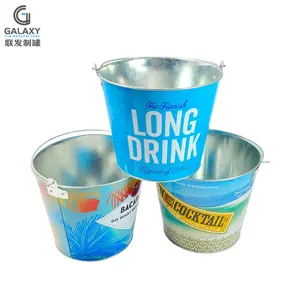Introduction to Measuring Buckets
Measuring buckets are indispensable tools designed for precision and efficiency in various settings. These versatile containers are engineered to offer accurate measurement of liquids and dry materials, making them ideal for professionals and DIY enthusiasts alike. Used widely in kitchens, laboratories, and construction sites, measuring buckets provide a straightforward solution to ensure that every ingredient or material is accurately quantified, leading to optimal results in any project.
Types of Measuring Buckets
Measuring buckets come in various types, each tailored to specific applications and user requirements. Understanding the distinct types can help you choose the right one for your needs:
- Standard Measuring Buckets: Typically marked with measurement lines, these buckets are ideal for cooking and mixing. They are designed to measure liquids like water, oils, and sauces accurately.
- Multipurpose Measuring Buckets: These buckets feature both dry and liquid measurement markings and can be used for various materials such as flour, sugar, or paint.
- Industrial Measuring Buckets: Designed for heavy-duty usage, these buckets are often made with robust materials to withstand harsh conditions and are usually larger in capacity.
- Dosing Bins: Mostly utilized in laboratories and manufacturing plants, these specialized measuring buckets come with precise calibration and are intended for accurate measurement of chemicals or other substances.
Applications of Measuring Buckets
The applications of measuring buckets are numerous and span across various fields. Here's a deeper look at where measuring buckets shine the most:
- Culinary Use: In kitchens, measuring buckets facilitate precise ingredient measurement, ensuring recipes are followed accurately and consistently.
- Construction and Renovation: Contractors and craftsmen use measuring buckets to mix concrete, measure paint, or assess the amount of materials required for a project.
- Laboratory Research: Researchers depend on measuring buckets for liquid and solid material measurement, ensuring experiments are conducted with precision.
- Agricultural Practices: Farmers utilize measuring buckets for fertilizer application, water distribution, and other tasks that require precise measurements for optimal crop yield.
Features and Advantages of Measuring Buckets
Measuring buckets are crafted with various features that enhance their usability and efficiency. Understanding these features can help you see the advantages they bring:
- Clear Measurement Markings: The graduated markings allow users to easily gauge the quantity of content, reducing guesswork.
- Durable Materials: Made from high-quality plastics, metals, or glass, measuring buckets are designed to withstand wear and tear in demanding environments.
- Ergonomic Design: Many measuring buckets feature handle designs that ensure a secure grip, allowing for easy pouring and transport.
- Easy-to-Clean: Most measuring buckets are dishwasher-safe or can be quickly cleaned by hand, making them highly maintenance-friendly.
- Stackable Designs: Some types come with stackable features for easy storage, taking up minimal space in your kitchen or workshop.




















































